What a beautiful day!
Well, until about 4 PM. Then the sky got cloudy again and it rained
lightly for a little while in the evening. We sure enjoyed the sunshine
during most of the day.
In the morning we stopped at the bakery near the small boat harbor in
Seward to get more of their delicious
fresh-baked whole wheat bread. We arrived at the
SeaLife Center just before it
opened at 9 AM. That was a good time to go because it wasnít crowded and
the staff was busier feeding the animals than when we left at 10:30.
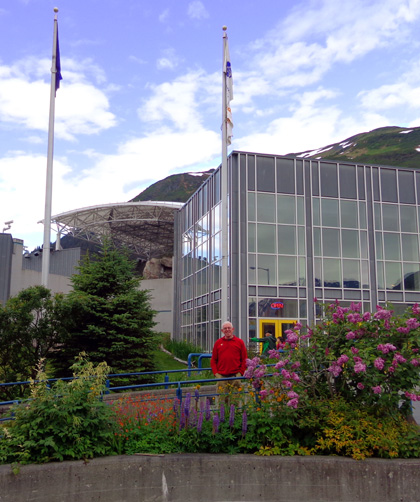
We're glad we decided to stay an extra day in Seward so we could go see this
outstanding research and educational facility.
We weren't sure if we should spend the money visiting the Center. The RVersí
journals we read either raved about it or didnít care for it at all.
Put us in the first
category.
We enjoyed it and felt it was well worth the entry fee.*
The exhibits are well-done, we saw lots of different sea critters, and the staff was
very knowledgeable and friendly.
*The regular adult
entry fee is $20 but there are discounts for kids,
senior citizens, AAA members, military personnel, Alaska residents, and
other categories of people. We paid $15 each
for the tickets we bought through the Seward Military Resort.
ABOUT THE SEA LIFE CENTER
The Alaska
SeaLife Center is a cold-water marine research and education facility that
houses a permanent rehabilitation center for rescued ocean wildlife.
This private, non-profit organization employs over 100 fulltime
employees, plus science interns and volunteers.
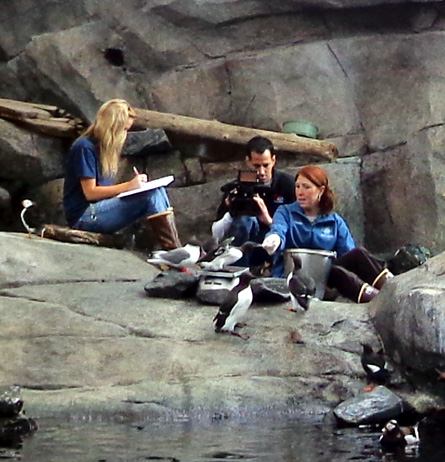
Staff observing and weighing birds in the seabird
habitat
The Center's stated mission is to "generate and share scientific
knowledge to promote understanding and stewardship of Alaska's marine
ecosystem."
Among other things, scientists are studying declining marine animal populations and
caring for sick and injured animals that come to their attention.
By inviting the public to view their work, they are enticing more people
to care about this ecosystem and support their mission.
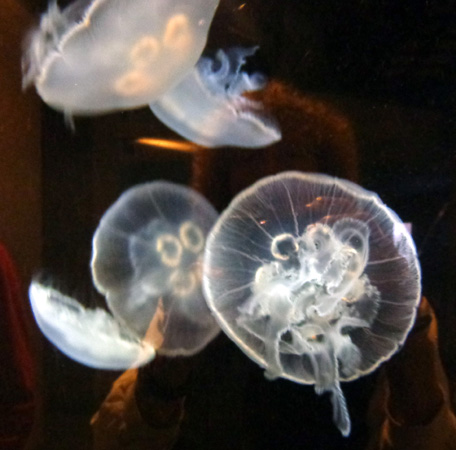
Moon jellies have transparent white bells trimmed
with a fringe of tentacles.
One of the ways scientists at the Center monitor marine mammals is
with remote-controlled cameras in Resurrection Bay, at Aialik Glacier, and
in the Chiswell Islands in the Gulf of Alaska about 35 miles south of Seward.
I showed a photo in the last entry of a remote camera that monitors Steller sea lions near Emerald Cove.
The cameras are wind- and solar-powered.
One of the exhibits at the SeaLife Center in Seward shows where the cameras are located and what
behaviors scientists are studying. Visitors to the Center can watch harbor seals and sea lions remotely via these cameras.
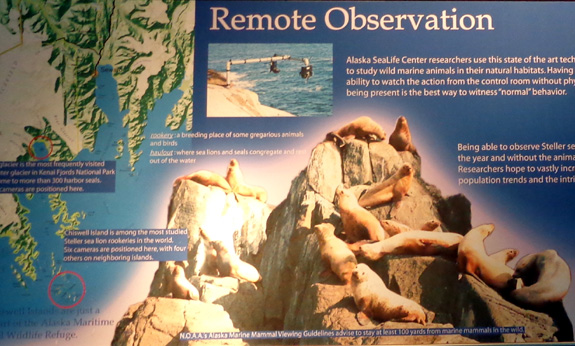
The exhibits and aquariums are open to the public year-round. For an additional fee
visitors can experience more detailed behind-the-scenes presentations and tours of the facility.
You can learn more about the Alaska SeaLife Center's work and interactive visitor
opportunities on its comprehensive
website.
OUR SELF-TOUR OF THE SEA LIFE CENTER
Visitors are free to wander through two floors of public exhibits that include
numerous indoor and outdoor displays, viewing decks, and several salt-water aquariums
containing fish, sea birds, Steller sea lions, harbor seals, an octopus,
and dozens of other sea creatures.
Many of the exhibits are interactive, allowing visitors to touch live
sea animals, highlight
areas on maps where they live, or listen to the sounds they make:
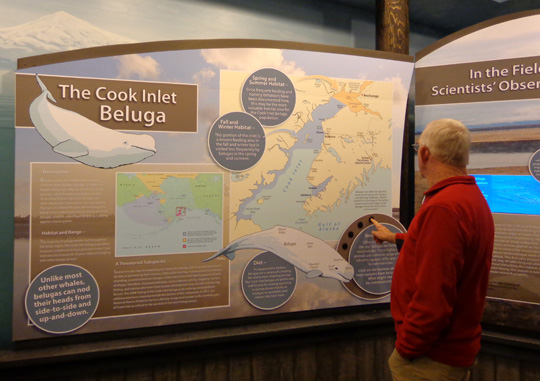
We're often suckers for tactile experiences or pushing buttons like
those! (You're never too old to learn new stuff.)
Since we hadn't been to the SeaLife Center before we were directed to begin with
the exhibits upstairs.
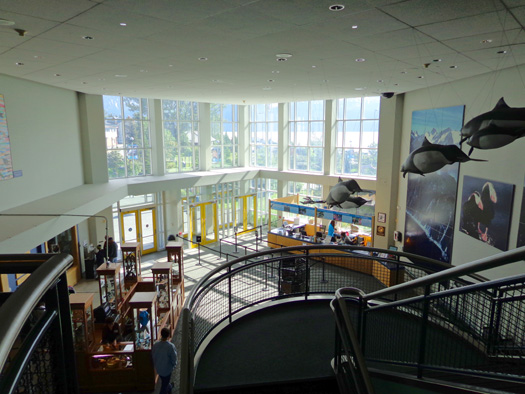
A spiral staircase and elevators carry visitors
upstairs.
There is a natural flow to the displays, which you can see in the diagrams on this
webpage.
There are several opportunities to walk or look outside for the "big
picture," including a large viewing deck overlooking Resurrection Bay
and outdoors salmon tanks:
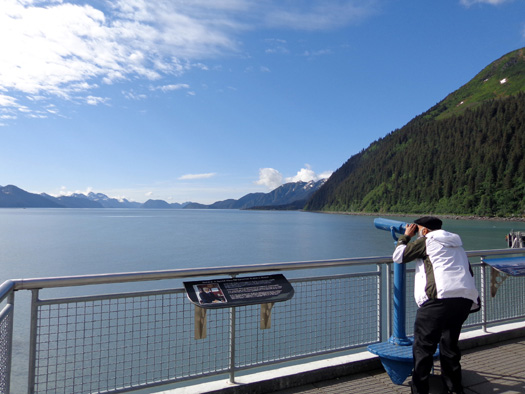
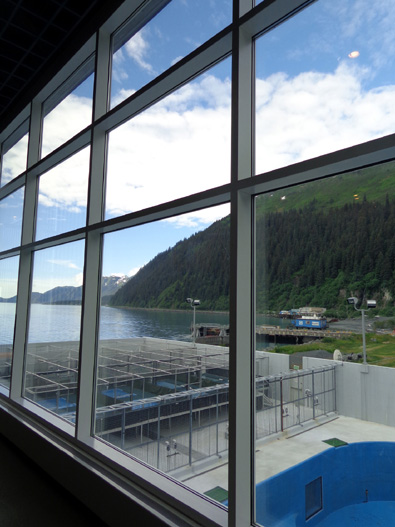
There are several aquariums inside the building that contain a wide
variety of fish and other
interesting sea critters that live in the cold waters off Alaska's
thousands of miles of coastline.
This large fish tank on the lower level can be viewed on two sides:
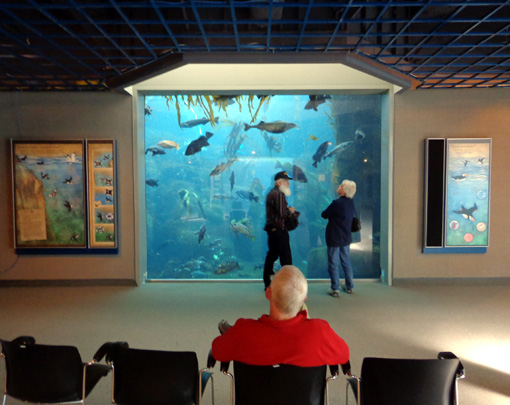
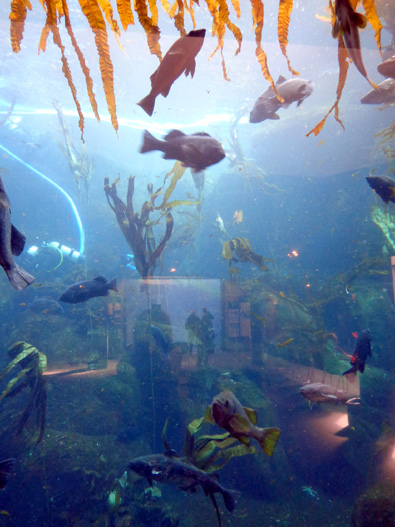
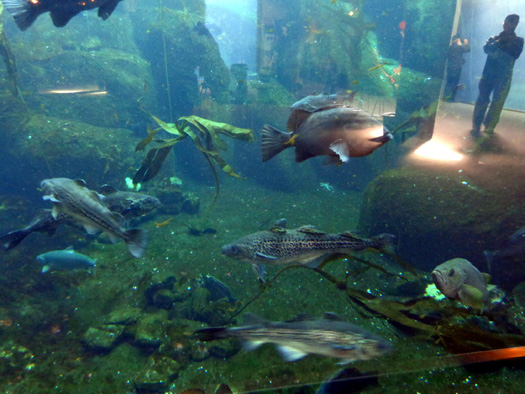
Smaller salt-water tanks upstairs showcase other interesting Alaskan sea
creatures like these:
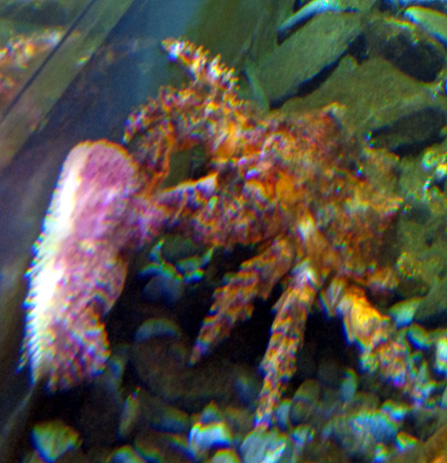
Gumboot chiton (L) and red Puget Sound king crab
(R)
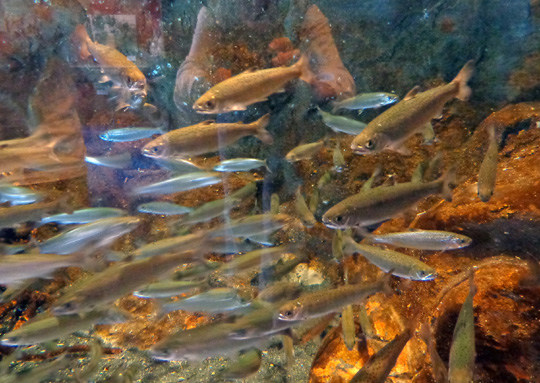
Salmon fry
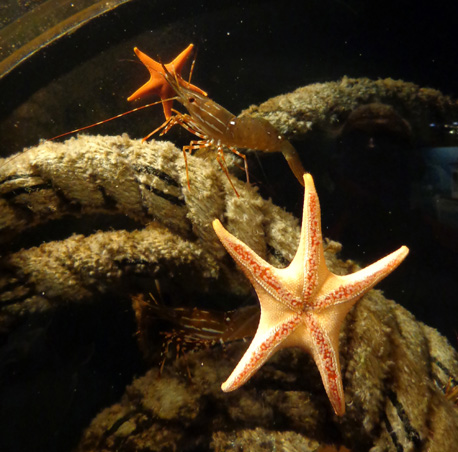
Two starfish, two shrimp
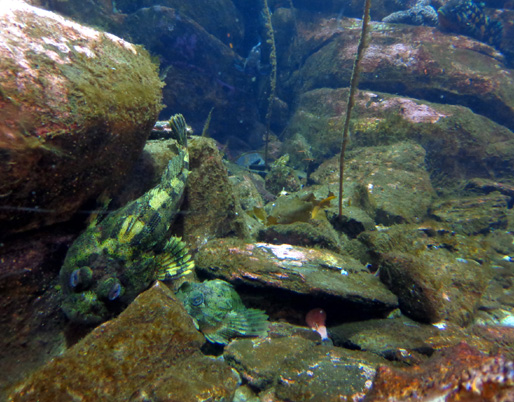
Some sort of rockfish??
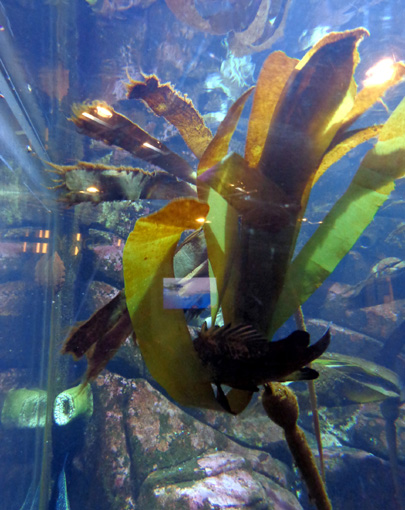
I just like the light and the colors in this one . . .
'TJ" is a giant Pacific octopus rescued from Prince William Sound:
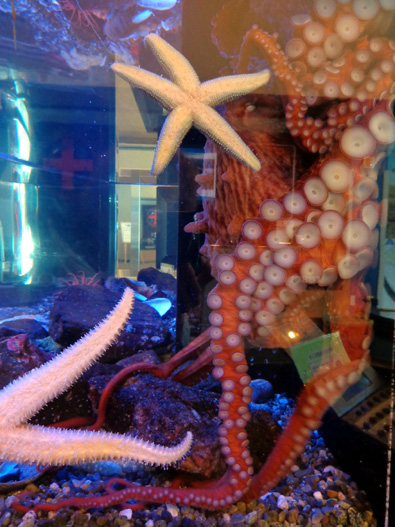
I enjoyed the nearby Discovery Pool, where we could reach in and touch starfish
and other creatures under the watchful eyes of staff members:
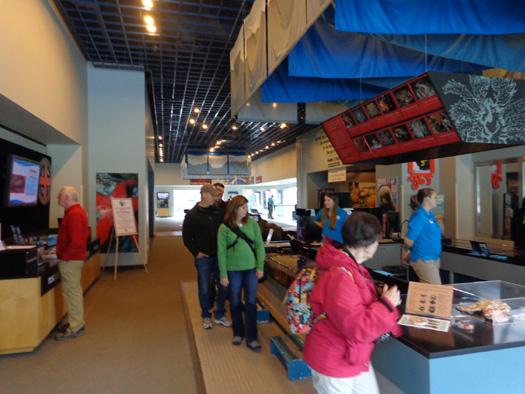
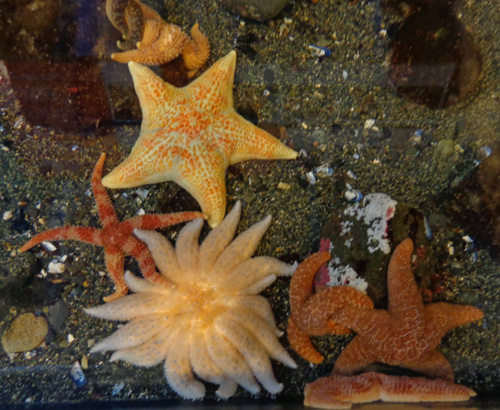
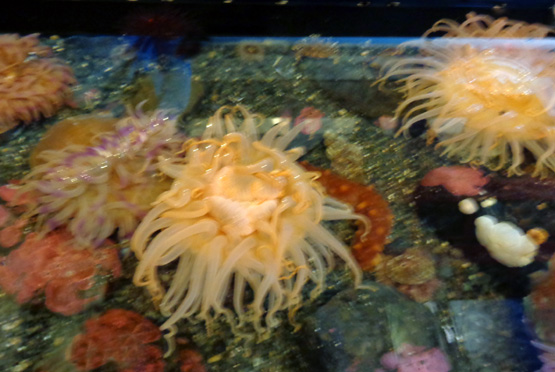
Continued on the next page . . . lots of seabirds, sea lions, and
a harbor seal
Happy trails,
Sue
"Runtrails & Company" - Sue Norwood, Jim O'Neil,
and Cody the ultra Lab
Previous
Next
© 2012 Sue Norwood and Jim O'Neil




















